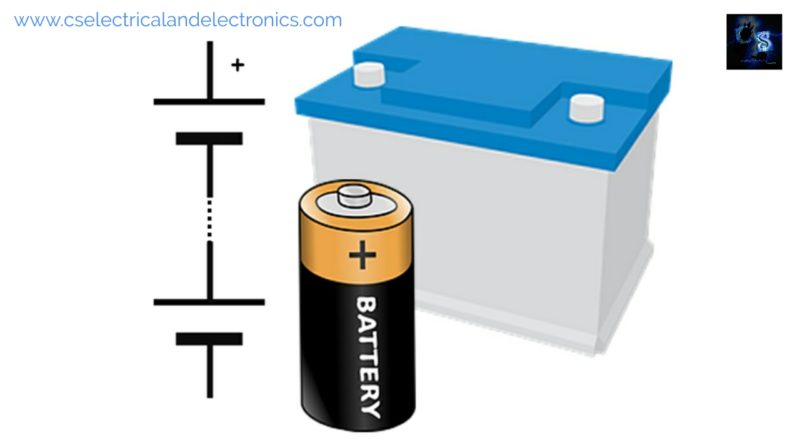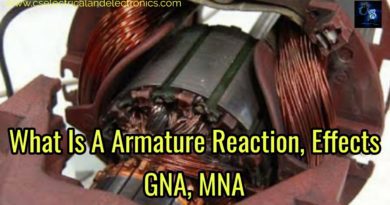Ideal And Practical Current, Voltage Source
Hello guys, welcome back to my blog. In this article, I will discuss what is an ideal voltage source, what is a practical voltage source, the difference between the ideal voltage source and a practical voltage source, what is ideal current source, what is practical current source, the difference between practical and ideal current source, etc. these all topics I will cover in this article. I will try to explain it in a simple way.
If you want an article on some other topics then comment below in the comment box. For any questions, you can also catch me @ Instagram – Click Here.
Also read – Basic Electrical Questions And Answers.
Ideal And Practical Current, Voltage Source
We all studied the network analysis subject which is one of the most important subjects in electrical engineering and in the GATE exam more questions are asked from this subject. The ideal and practical concepts are from this subject.
What Is Ideal Voltage Source

Guys if you see any ideal voltage source, the voltage across its two terminal remains the same. No matter how much amount of current you draw from the voltage source, the voltage across its two terminal remains constant.
Go and see the VI Characteristics in your textbook, the voltage across its two terminal remains constant irrespective of the current that is drawn through this voltage source. The current that is drawn through this voltage source depends upon the load resistance. So, the current I, which is drawn through this voltage source can be given as I = V/R, where R is the load resistance. An ideal voltage source, there is no limit for the current drawn from the source.
What Is Practical Voltage Source

If you see a practical voltage source, the amount of current that can be drawn through the source is limited. So, if you see any practical voltage source which is available in the market, they used to define the current rating for the voltage source. So, the maximum current that can be drawn through the voltage source depends upon the current rating.
The practical voltage source has a series of internal resistance. So the voltage appearance across its two terminal can be given as V= Vs -(I*Rs), Wher Vs is the supply voltage, Rs is the series internal resistance, V is the voltage across the terminal and the current I is the current which is drawn through the voltage source.
As the current which is drawn through this supply increases, the voltage drop across this resistance will increase(if resistance is high) and because of that the amount of voltage that appears across the terminal will reduce. So, to reduce the drop across this series resistance Rs, the value of the series resistance should be low.
Difference Between Practical And Ideal Voltage Source
01. The ideal voltage source does not have any series of internal resistance where a practical voltage source has a series of internal resistance.
02. An ideal voltage source, the voltage across terminal is constant whereas in practical voltage source, the voltage across its terminal changes with the current.
03. The ideal voltage source can supply any amount of current to the load whereas the practical voltage source can supply a limited amount of current.
What Is Ideal Current Source

The ideal current source delivers the constant current to the load, no matter what amount of voltage that appears across this current source. The ideal current source always supplies constant current and the ideal current source can deliver any amount of voltage to the load.
What Is Practical Current Source

In the practical current source, there is one parallel resistance with a current source. In the practical current source, there is a limitation on the amount of voltage supplied or the voltage that can appear across the load.
The Current I = Is – (V/Rsh), where Is is the current source, Rsh is parallel resistance, V is the voltage across terminals and I is the current flowing through the load resistance. So, as the value of the voltage that appears across the current source increases, the actual current that is flowing through the load will reduce because there will be leakage current through this shunt resistance. So, to reduce this leakage current, the value of the shunt resistance should be as high as possible. In the practical current source, the value of the shunt resistance is in the range of megaohms.
Difference Between Ideal And Practical Current Source
01. In the case of the ideal current source, there is no shunt resistance whereas, in the case of the practical current source, there is a shunt resistance.
02. An ideal current source, all the current will flow through the load resistor whereas, in the practical current source, it has shunt resistance so all the entire current will not flow through the load resistor because there will be some leakage current through this shunt resistance.
03. In the case of the ideal current source, it supplies the constant current to the load, no matter the voltage that appears across this current source whereas, in the case of a practical current source, the current that is supplied to the load depend upon the voltage that appears across this current source.
Guys, I hope this article may help you all a lot. Thank you for reading. For any doubts you can also catch me @ Instagram – Click Here.
Tags: What Is Ideal Current Source, Ideal Voltage Source, Practical Current Source, Practical Voltage Source.
Also, read:
- Top 11 Free Courses On Battery For Engineers With Documents
- What Is Vector CANoe Tool, Why It Is Used In The Automotive Industry
- What Is TCM, Transmission Control Module, Working, Purpose,
- Top 100 HiL hardware in loop Interview Questions With Answers For Engineers
- Driver Monitoring Systems In Vehicles, Working, Driver Sleepy Alert
Author Profile
- Chetu
- Interest's ~ Engineering | Entrepreneurship | Politics | History | Travelling | Content Writing | Technology | Cooking
Latest entries
 All PostsApril 29, 2024Top 11 Free Courses On Battery For Engineers With Documents
All PostsApril 29, 2024Top 11 Free Courses On Battery For Engineers With Documents All PostsApril 19, 2024What Is Vector CANoe Tool, Why It Is Used In The Automotive Industry
All PostsApril 19, 2024What Is Vector CANoe Tool, Why It Is Used In The Automotive Industry All PostsApril 13, 2024What Is TCM, Transmission Control Module, Working, Purpose,
All PostsApril 13, 2024What Is TCM, Transmission Control Module, Working, Purpose, All PostsApril 12, 2024Top 100 HiL hardware in loop Interview Questions With Answers For Engineers
All PostsApril 12, 2024Top 100 HiL hardware in loop Interview Questions With Answers For Engineers








